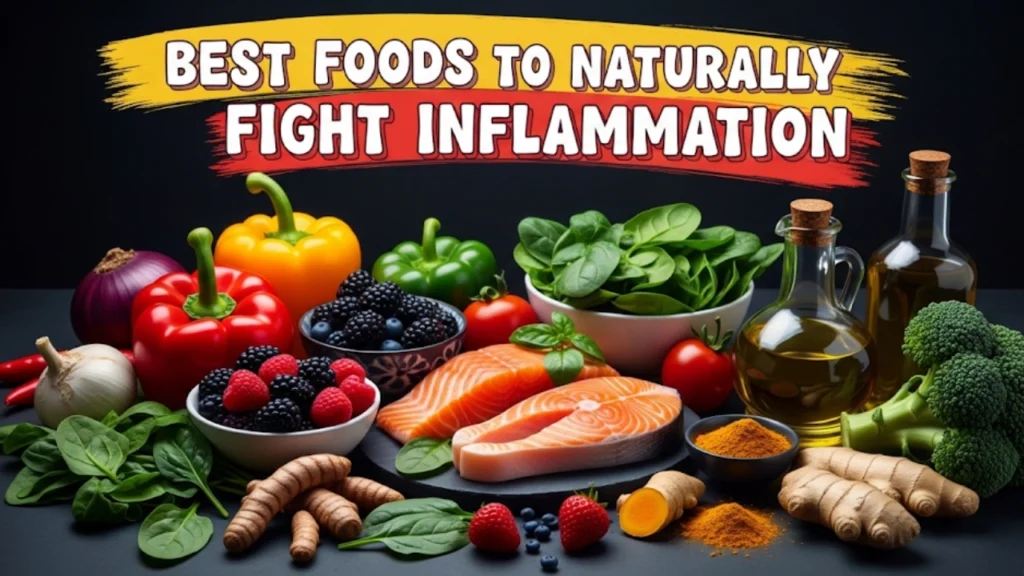We live in a world on overdrive. By June 2025, the constant ping of notifications, the pressure to perform, and the sheer pace of modern life aren’t just draining our energy – they’re literally setting our bodies on fire from the inside out. Chronic inflammation, once a buzzword, is now clinically recognized as the stealthy fuel behind a staggering range of modern ailments, from persistent joint aches and brain fog to increased risk for more serious metabolic and cardiovascular conditions. The good news? Your most potent weapon against this internal blaze isn’t found in a prescription bottle, but right on your plate. Forget fleeting diet fads; let’s dive into the latest science-backed, inflammation-fighting superstars dominating nutritional conversations in 2025.
Why Taming the Flame Matters More Than Ever in 2025
Acute inflammation is your body’s heroic first responder – it rushes to heal a cut or fight an infection. Chronic inflammation, however, is like that responder never clocking off. It smolders silently, damaging healthy tissues over years. Research throughout early 2025 continues to solidify links between unchecked chronic inflammation and accelerated aging, reduced immune resilience, mood imbalances, and the development of numerous chronic diseases. In our hyper-connected, high-stress environment, proactively cooling this internal fire isn’t just wise; it’s essential for long-term vitality and well-being. Your diet is the primary dial you can turn to modulate this process.
Beyond the Basics: 2025’s Anti-Inflammatory Food Stars
While staples like fatty fish, leafy greens, and berries remain foundational, cutting-edge research and evolving agricultural practices have spotlighted some powerful, sometimes unexpected, contenders. Here’s where the science points us this year:
-
Apoptogenic Mushrooms Go Mainstream (Beyond Coffee!):
-
Reishi & Lion’s Mane: Move over, Chaga. 2025 sees Reishi (“The Mushroom of Immortality”) and Lion’s Mane gaining serious traction for their potent anti-inflammatory and neuroprotective properties. Studies are exploring their unique polysaccharides (like beta-glucans) and triterpenes for modulating the immune system and reducing inflammatory markers like CRP (C-Reactive Protein). Look for high-quality extracts in powders, tinctures, or even incorporated into broths and savory dishes.
-
Why Now: Research into the gut-brain-immune axis has exploded, highlighting how these fungi support systemic balance and resilience against inflammatory stressors.
-
-
The Humble Legume Gets a High-Tech Upgrade:
-
Sprouted & Fermented Lentils/Beans: We’ve known legumes are good, but 2025 emphasizes maximizing their benefits. Sprouting and fermenting lentils, chickpeas, and black beans significantly increases bioavailability of anti-inflammatory compounds (like polyphenols) while reducing compounds that can cause digestive upset. This process also boosts levels of GABA, linked to calming inflammation and stress responses. Expect to see more sprouted legume pastas and fermented bean dips hitting shelves.
-
Why Now: Focus on gut health as central to inflammation control drives innovation in making these fiber-rich powerhouses even more digestible and nutrient-dense.
-
-
Sea Vegetables: The Ocean’s Deep Green Secret:
-
Beyond Nori: Wakame, Dulse, and Irish Moss are stepping into the spotlight. Rich in unique antioxidants like fucoxanthin (especially in Wakame) and a spectrum of minerals (iodine, magnesium), seaweeds possess remarkable anti-inflammatory and potential anti-obesity effects. New 2025 studies delve into their ability to inhibit specific pro-inflammatory pathways (like NF-kB).
-
Why Now: Sustainable, nutrient-dense food sources are paramount. Sea vegetables offer exceptional mineral profiles often lacking in modern diets, crucial for enzymatic processes that regulate inflammation.
-
-
Colorful Tubers with a Twist:
-
Purple & Black Sweet Potatoes: Move aside, orange! Deeply pigmented purple and black sweet potatoes are rich in anthocyanins – potent antioxidants with superior anti-inflammatory activity compared to their orange cousins. Research in early 2025 suggests these compounds may be particularly effective at reducing inflammation in vascular tissues.
-
Why Now: Consumer demand for visually appealing and functional foods is high. These vibrant tubers deliver both stunning color on the plate and powerful internal benefits.
-
-
Herbs & Spices: Concentrated Kitchen Medicine:
-
2025 Spotlight: Saffron & Sumac: While turmeric (especially with black pepper) remains a star, 2025 research highlights Saffron’s active compound, crocin, for its potent neuro-anti-inflammatory effects, showing promise for mood and cognitive health. Sumac, with its tart, lemony flavor, is packed with anthocyanins and flavonoids, offering significant antioxidant and anti-inflammatory capacity, often outperforming more common spices in lab studies. Easily sprinkled on salads, roasted veggies, or dips.
-
Why Now: The quest for global flavors meets the demand for functional ingredients. These spices add complexity to dishes while delivering concentrated anti-inflammatory compounds.
-
How You Eat is Just as Important as What You Eat (2025 Insights)
-
Prioritize Food Synergy: It’s not just one superfood; it’s the combination. Pairing vitamin C-rich foods (like bell peppers, citrus) with plant-based iron sources (spinach, lentils) enhances absorption. Combine healthy fats (avocado, olive oil) with colorful veggies to maximize absorption of fat-soluble antioxidants (like carotenoids in carrots, tomatoes).
-
Mindful Eating for Gut Calm: Stress is a major inflammation trigger. 2025 emphasizes truly slowing down – chew thoroughly, put away screens, and savor meals. This activates the parasympathetic nervous system (“rest and digest”), optimizing digestion and nutrient absorption, reducing gut inflammation.
-
The Fermentation Frenzy Continues: Kimchi, sauerkraut, kefir, kombucha, and miso aren’t just trendy; they’re gut-microbiome superchargers. A diverse, healthy gut microbiome is intrinsically linked to reduced systemic inflammation. Aim for a small daily dose of diverse fermented foods.
-
Beware of Stealth Inflammatory: Ultra-processed foods (even seemingly “healthy” packaged snacks), refined sugars, and excessive industrial seed oils (soybean, corn, sunflower) remain prime culprits for fanning inflammatory flames. Read labels diligently – simplicity is key.
Your Action Plan: Douse the Flames Daily
Turning knowledge into action is crucial. Here’s your 2025 anti-inflammatory eating strategy:
-
Rainbow Revolution: Make half your plate vibrantly colored non-starchy vegetables and fruits at every meal. Diversity = a wider range of protective compounds.
-
Healthy Fats are Essential: Prioritize extra virgin olive oil, avocados, nuts (especially walnuts, almonds), seeds (flax, chia, hemp), and fatty fish (salmon, mackerel, sardines) 2-3 times per week. Omega-3s are potent inflammation soothers.
-
Fiber is Fundamental: Load up on beans, lentils, whole grains (oats, quinoa, brown rice), vegetables, and fruits. Fiber feeds beneficial gut bacteria, producing anti-inflammatory short-chain fatty acids.
-
Spice Up Your Life Generously: Don’t be shy with turmeric, ginger, garlic, cinnamon, black pepper, saffron, sumac, rosemary, and oregano. Treat them as essential medicine.
-
Hydrate Wisely: Choose water, herbal teas (ginger, turmeric, green tea), and limited black coffee. Ditch sugary sodas and excessive fruit juices.
-
Embrace Fermented Friends: Include at least one small serving of fermented food daily (a spoonful of sauerkraut, a small glass of kefir, some kimchi).
-
Minimize the Saboteurs: Dramatically reduce intake of sugary treats, refined carbs (white bread, pastries), processed meats, fried foods, and foods cooked in unstable industrial seed oils.
The Takeaway: Your Plate, Your Power
Combating chronic inflammation isn’t about a restrictive diet; it’s a powerful, delicious lifestyle shift towards nourishment and resilience. By consistently choosing the vibrant, whole, scientifically-backed anti-inflammatory superstars of 2025 – from the depths of the ocean with sea vegetables to the cutting-edge use of apoptogenic mushrooms and enhanced legumes – you actively dial down the internal fire. Combine this with mindful eating practices and minimizing inflammatory triggers, and you equip your body with its most potent defense system. In our demanding 2025 world, this isn’t just eating well; it’s investing in your sustained energy, clarity, and long-term health. Start today – your future vibrant self will thank you.
Also Read:


